|
|
While Leopard was released at 6pm on Friday round the world, including Singapore, in Thailand we had an 18-hour delay to 12 noon on 27th October. Some shops did not have it and I was told 4pm. I eventually tracked it down in Siam Discovery Center just after lunch.
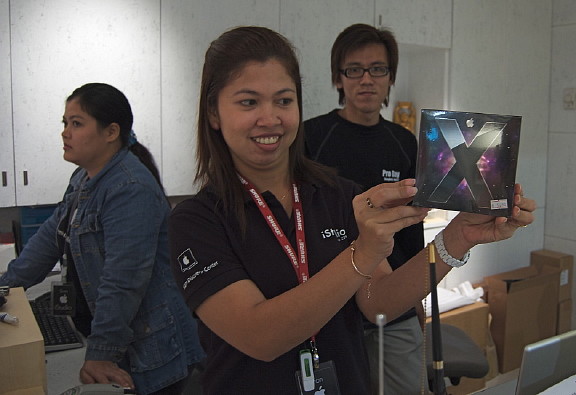
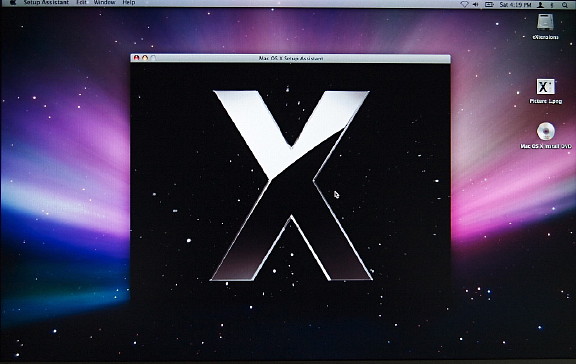
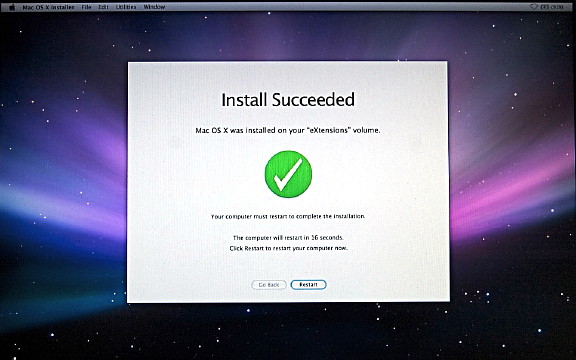
Like all applications, Mail has a new toolbar with crisper fonts: a cosmetic effect that changes nothing in its operation. Throughout OS X there are new icons, for folders and file types. My settings were intact and the integrity of the mailboxes was fine: all had been preserved. The Junk Mail menu displayed all messages in the index in an orange script, but (thus far) I have been unable to change this to a more sedate black, or any other colour. A new feature allowed RSS feeds to be downloaded as mail, so in Safari RSS pages there is now an extra "subscribe" link for that purpose. New items in the feeds themselves are highlighted with a blue dot and a subtle blue shading. I miss the brighter colours that made it clear which items were new, but there is nothing in the preferences that now allows these. Coverflow was first used in iTunes and allows horizontal scrolling of album covers. It may also be seen on the iPod touch and the iPhone. It is now a Finder display method: contents of some file-types may be viewed without needing them to be opened. I find this is best seen if the Finder window is enlarged: the text on the pages can be seen clearly then.
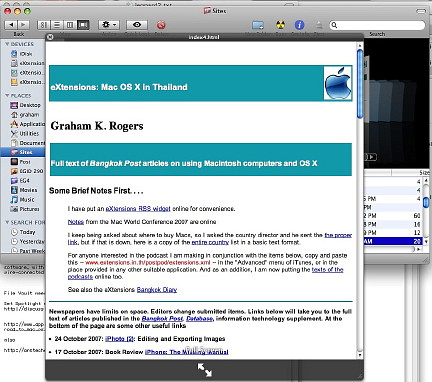
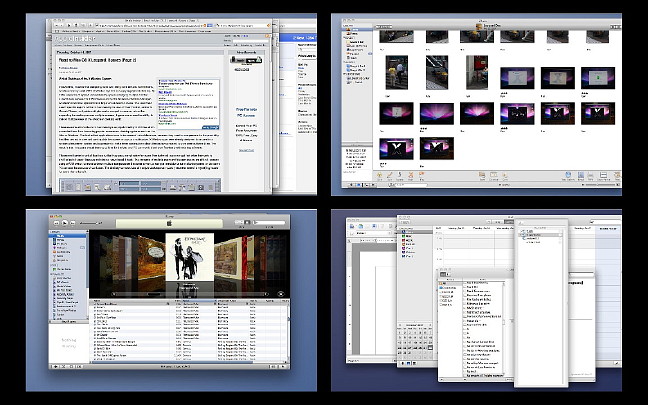
I set this up initially with a screen for Internet working, one for graphics, a third for iTunes and another for boring stuff like spreadsheets and the calendar. The F8 key brings them all up (a notebook user may also need the fn key), but there is also a convenient menubar icon that allows quick selection. Clicking on an open application's icon in the Dock will switch to that program and to its Space. When all Spaces are viewed onscreen, an application can be dragged from one to another.
Only one application failed: the Open Source Gimp which I have used instead of Adobe Photoshop. Little Snitch is no longer reporting the specific application that tries to transmit over the Internet but instead reports all as kernel tasks. This lead to me briefly stopping my Internet access. Growl (a notification system) needed updating so OS X declined to start it, but I downloaded the newest version later. There are a number of features I am not sure about. The menubar, for example, is semi-transparent so while it compensates for a darker image on the desktop, one that has light and dark patches shows through more. In AddressBook, the Bluetooth connection has been removed. Repairing Permissions has no progress bar, only the candy-stripe effect, so it is not easy to gauge progress. My transition to Leopard has been fairly smooth and I shall be examining it in more detail soon, beginning with Time Machine: Apple's new backup feature.
|
|
